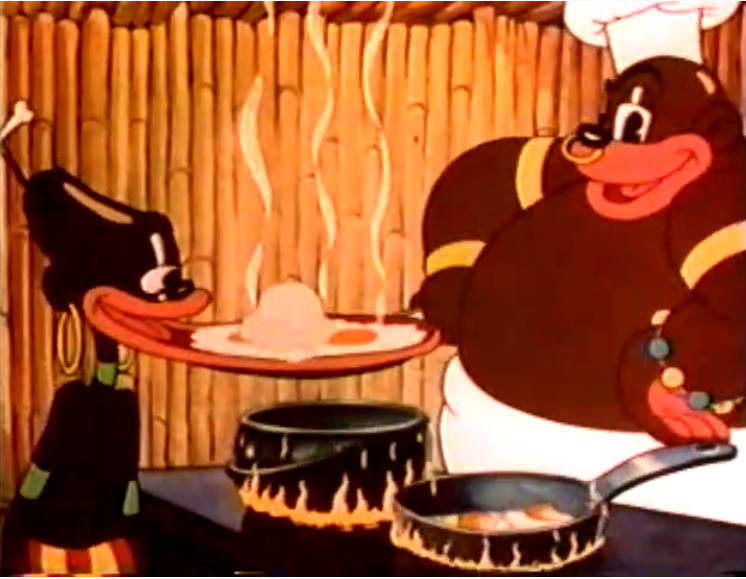Difference between revisions of "The Isle of Pingo Pongo"
m |
m |
||
| Line 1: | Line 1: | ||
[[File:Osle-pingo-pongo-lobby600.jpg|thumb]] | [[File:Osle-pingo-pongo-lobby600.jpg|thumb]] | ||
| − | The Isle of Pingo Pongo is a | + | The Isle of Pingo Pongo is a Merrie Melodies cartoon directed by Tex Avery back in 1938. Warner Brothers released the film on May 28, 1938. This cartoon is the sixth in the [[Censored Eleven]], a list of eleven cartoons that United Artist banned and withheld from syndication in 1968 due to the use of racial stereotypes in the cartoons that were deemed too offensive for society. |
| − | This | ||
==Plot== | ==Plot== | ||
Revision as of 13:38, 11 March 2021
The Isle of Pingo Pongo is a Merrie Melodies cartoon directed by Tex Avery back in 1938. Warner Brothers released the film on May 28, 1938. This cartoon is the sixth in the Censored Eleven, a list of eleven cartoons that United Artist banned and withheld from syndication in 1968 due to the use of racial stereotypes in the cartoons that were deemed too offensive for society.
Plot
A cruise ship's trip from New York starts departing to the island of Pingo-Pongo, presumably located in the South Seas. The ship sails past the Statue of Liberty, who acts as a traffic cop, past the “Canary Islands” and “Sandwich Islands,” to the remote island. The inhabitants are mostly tall, black, and have big feet and lips. They at first play drums, then break into a jazz beat, still described as a “primitive savage rhythm.”[1] This short actually doesn't really has a plot, half of the cartoon only showing the "primitive" behavior of the native from Pingo Pongo island which all the natives portrayed black and have enormous big lips.
The Controversy
When Associated Artists Productions and then United Artists brought the cartoon to television through syndication in the late 1950s, its imagery was no different from other syndicated fare that had once run in theaters. But by 1968, Europe had started to decolonize Africa, and the sight-gags about the lip sizes of dark-skinned figures and the “primitive” behavior of the indigenous hinted at the colonialism from which the continent had started breaking free.[2]. Hence, this kind of gag is no longer accepted by modern society.
External Link
Watch The Isle of Pingo Pongo at Dailymotion
The Isle of Pingo Pongo at IMDb
References
- ↑ Looneytunes Fandom retrieved December 18, 2020
- ↑ Cartoon Research retrieved December 18, 2020

